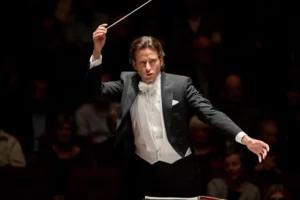The job of a music director, also known as a conductor or maestro, involves overseeing and leading a musical ensemble, such as an orchestra, choir, or band, to achieve a cohesive and artistic performance. A music director’s role is multifaceted, encompassing various responsibilities related to music interpretation, rehearsal direction, artistic vision, and performance leadership.
- Music Interpretation: As a music director, one of the primary responsibilities is to interpret the music and convey the composer’s intentions to the performers. This involves studying the score (sheet music) thoroughly, understanding the musical structure, dynamics, tempos, phrasing, and nuances of the piece, and making interpretive decisions to bring the music to life. The music director’s interpretation may vary depending on the genre of music, the style of the composer, and the ensemble’s level of proficiency.
- Rehearsal Direction: The music director conducts rehearsals to guide and shape the ensemble’s performance. This involves leading sectional rehearsals with different sections of the ensemble (e.g., strings, woodwinds, brass), providing feedback and instruction to individual musicians or vocalists, and conducting full ensemble rehearsals to bring all the elements of the music together. The music director helps the performers achieve precision, balance, expression, and unity in their interpretation of the music.
- Artistic Vision: Music directors are responsible for creating an artistic vision for the ensemble and planning the repertoire for performances. This involves selecting the music to be performed, determining the program’s overall theme or concept, and making decisions about the artistic direction of the ensemble. The music director may also collaborate with composers, arrangers, and other artists to create new works or unique arrangements that fit the ensemble’s style and vision.
- Performance Leadership: During performances, the music director serves as the leader of the ensemble. This involves conducting the ensemble, providing cues, and shaping the performance in real-time to create a cohesive and expressive interpretation of the music. The music director communicates with the performers through gestures, facial expressions, and body language to guide their performance and maintain synchronization and cohesion among the musicians or vocalists.
- Collaborations: Music directors often collaborate with other artists, such as soloists, guest conductors, composers, or choreographers, to create interdisciplinary performances. They work closely with these collaborators to ensure that the music fits seamlessly into the overall production, and they may provide input on the artistic direction of the performance.
- Educational and Administrative Duties: In some cases, music directors may also have educational and administrative duties. This can include conducting educational workshops, coaching individual musicians or vocalists, managing the budget and resources of the ensemble, overseeing auditions, and planning and organizing concerts, tours, and other events.
In summary, the job of a music director is a dynamic and multifaceted role that involves interpreting music, directing rehearsals, shaping artistic vision, providing performance leadership, collaborating with other artists, and handling administrative duties. A music director’s ultimate goal is to create a compelling and artistically satisfying performance that engages and captivates the audience.
